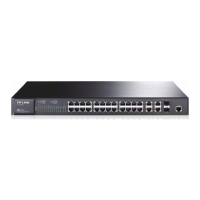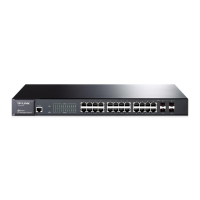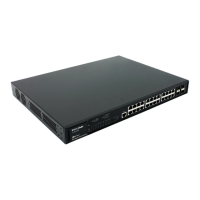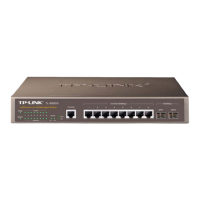User Guide 581
Configuring Port Security Port Security Configuration
Learn Address
Mode
Select the learn mode of the MAC addresses on the port. Three modes are
provided:
Delete on Timeout: The switch will delete the MAC addresses that are not used
or updated within the aging time. It is the default setting.
Delete on Reboot: The learned MAC addresses are out of the influence of the
aging time and can only be deleted manually. The learned entries will be cleared
after the switch is rebooted.
Permanent: The learned MAC addresses are out of the influence of the aging
time and can only be deleted manually. The learned entries will be saved even the
switch is rebooted.
Status Select the status of Port Security. Three kinds of status can be selected:
Drop: When the number of learned MAC addresses reaches the limit, the port
will stop learning and discard the packets with the MAC addresses that have not
been learned.
Forward: When the number of learned MAC addresses reaches the limit, the port
will stop learning but send the packets with the MAC addresses that have not
been learned.
Disable: The number limit on the port is not effective, and the switch follows the
original forwarding rules. It is the default setting.
2) Click Apply.
Note:
•
Port Security cannot be enabled on the member ports of a LAG, and the port with Port Security
enabled cannot be added to a LAG.
•
On one port, Port Security and 802.1x cannot be enabled at the same time.
2.2 Using the CLI
Follow these steps to configure Port Security:
Step 1 configure
Enter global configuration mode.
Step 2 interface { fastEthernet
port
| range fastEthernet
port-list
|
gigabitEthernet
port
|
range
gigabitEthernet
port-list
|
ten-gigabitEthernet
port
|
range
ten-gigabitEthernet
port-list
}
Enter interface configuration mode.
Downloaded from ManualsNet.com search engine

